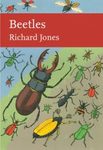By
Leon (NHBS Catalogue Editor)
28 Jun 2019
Written for Paperback

It should have been a straightforward expedition. As a young career palaeontologist, Nick Pyenson found himself in the Atacama desert of Chile, tasked with mapping rock layers to establish a continuous chronology that would help dating fossils found in the area. Whale fossils, Pyenson’s speciality, are rarely found complete, which is true of most fossils. So what do you do when a colleague takes you to the construction site of a new highway and shows you not one, not several, but literally dozens of complete fossil whale skeletons? It represented a treasure trove for science, but retrieving the material before the highway constructors would move in was also a daunting, labour-intensive task that could make or break careers. I almost found myself standing next to Pyenson in the dusty clearing, the Chilean sun beating down on me as he faced this dilemma. This is just one of several immersive narratives recounted in
Spying on Whales, which successfully blends travelogue and popular science.
Pyenson, as curator of the fossil marine mammal collection of the Smithsonian’s National Museum of Natural History, is uniquely placed to write a book like this. The museum houses the world’s largest collection of fossil whale remains and related documentation and publications, and he is intimately familiar with it. Although the first part of
Spying on Whales covers how whales evolved from land-dwelling creatures to become the ocean-dwelling giants of today, this book is not a nuts-and-bolts technical account (see instead the readable introductions offered by
Return to the Sea and
The Walking Whales). Even so, this book adds new information to this rapidly developing field, including a detailed first-hand account of the revolutionary fossil site of Cerro Ballena described in the first paragraph.
Another question informed by palaeontology is how and why whales became so big. As it turns out, gigantism is only a recent development in the approximately 50-million year evolutionary history of whales. The search for clues takes the reader from the blood-stained deck of an Icelandic whaling station to study the finer details of feeding and jaw mechanics up-close (including the chance discovery of a sensory organ in the chin of filter-feeding whales that had escaped everyone’s attention so far), to the waters surrounding Alaska to tag humpback whales to learn more about their feeding behaviours. Along the way, Pyenson covers the theoretical underpinnings of gigantism, including Cope’s rule, allometry (the study of biological scaling, see the classic
On Growth and Form and limits imposed by physics, something which West touched on in
Scale.
The last part of the book looks at the uncertain future for many whale species. Having barely recovered from the onslaught of industrial whaling, whales now face new challenges from increased shipping, waste, and chemical and noise pollution. There is a very interesting chapter on shifting baselines. Originally coined in the context of overfishing (see my reviews of
Vanishing Fish and
All the Boats on the Ocean), it indicates how each successive generation of humans accepts degraded ecosystems as the new normal, forgetting what the past was like. Some of this ties in with the groundbreaking work on top-down trophic cascades involving orcas, sea otters, sea urchins, and kelp forests that James A. Estes recounted in
Serendipity. Sea urchins eat kelp. When otters were reintroduced following overhunting for fur, kelp forests rebounded. With the disappearance of larger prey items, orcas have in turn, however, started snacking on sea otters. This raises the question of what orcas were eating before industrial whaling. It has been suggested that many large whales were on the menu. Whaling in that sense has impoverished the seas in ways we did not even imagine, which is a perfect example of shifting baselines (see also
Whales, Whaling, and Ocean Ecosystems).
A final touch worth mentioning are Alex Boersma’s fine illustrations, mostly linocuts, that were commissioned specifically for this book. She has a deft hand in creating illustrations that are both stylish and informative, her bubble-net diagram on page 115 being a particularly good example.
Spying on Whales is a perfect mix of both science and the stories behind it, laying bare the hardships, teamwork, and effort involved. Pyenson’s narrative is very readable and the personal experiences he recounts are particularly vividly written. I finished the book pretty much in one sitting and highly recommend it, whether you have an interest in palaeontology or whales.




































